Into Practice, a biweekly communication distributed from the Office of the Vice Provost for Advances in Learning to active instructors during the academic year was inspired by a successful 2012 HILT grant project. The e-letter highlights the pedagogical practices of individual faculty members from across Schools and delivers timely, evidence-based teaching advice, contributing to and strengthening a University-wide community of practice around teaching.
Below is a catalog of all the Into Practice issues sorted by the publication date. To subscribe to Into Practice, please sign-up via our Mailing List page.
-

Establishing a rigorous and invigorating classroom
Robert Reid-Pharr, Professor of Studies of Women, Gender, and Sexuality and of African American Studies strives to create a “rigorous but not frightening” classroom experience for the course Gender, Sexuality, and the Archive, in which students take turns leading class discussion—presenting thoughts on, challenges to, and questions about course readings derived from essays they have written. With facilitation from Reid-Pharr, their peers then ask difficult questions of the discussion leader that begin to generate meaningful conversation.
-
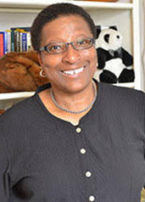
Teach, embody, and model deep listening and reflection
Cheryl Giles, Francis Greenwood Peabody Senior Lecturer in Pastoral Care and Counseling, shares her own experiences, missteps, and successes to demonstrate self-awareness for students in her course Counseling for Wellness and Resilience: Fostering Relational Wisdom. She encourages students to listen deeply to themselves and others without judgment by practicing mindfulness throughout the course.
-
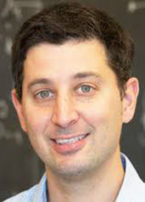
Motivating students to transition from learning-for-testing to learning-for-learning
In his Statistical Mechanics and Thermodynamics course (a core class for physics concentrators) Matthew Schwartz, Professor of Physics, tries to move his students away from a binge-learning exam-based model, common in science classes, to one of sustained learning throughout the semester. To do this, he persuades students to read the course materials before class through comprehensive pre-class quizzes, replaces the midterm with a non-collaborative problem set, and assigns a take-home final weighted the same as two problem sets.
-

Engaging Students with Difficult Text Through a Flipped Classroom
In his general education courses, Jay Harris, Harry Austryn Wolfson Professor of Jewish Studies, posts two different videos prior to class for students to view: pre-reading videos contextualize and provide guidance for the week’s readings, and lecture videos replace Harris’s in-class lectures on the material. Students then send their questions and comments to Harris through Canvas, which he uses to build the class discussion.
-
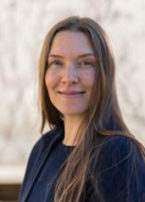
Research-based teaching using a collaborative learning approach
Manja Klemenčič, Lecturer on Sociology, has scaled a small research-based seminar course for sociology concentrators to one of Harvard College’s newest general education courses, Higher Education: Students, Institutions, and Controversies. While the previous iteration asked students to conduct an individual research project, the new version emphasizes the importance of group work and collaboration. “Students will learn how to conduct social science research and practice working as a research group exploring issues close to their student experiences.” Projects will culminate in a symposium presentation about student research findings and will be showcased on the platform Harvard Undergraduate Research into Higher Education.
-
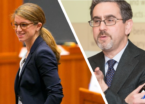
Mutually beneficial partnerships
Robert S. Huckman, Albert J. Weatherhead III Professor of Business Administration and Ariel Dora Stern, Poronui Associate Professor of Business Administration pair student groups with local hospitals to address challenges related to access, adoption of new delivery methods, and the quality of care in their elective course, Transforming Healthcare Delivery. This applied work is rooted in a series of cases that have been written by Harvard Business School (HBS) faculty and articles that cover broader ideas from the literature and previous research.
-

Physically inhabiting new and different spaces
Virginie Greene, Professor of Romance Languages and Literature, transfers the theme of her Freshman Seminar course, The Grail Quest of Marcel Proust, to the classroom by holding every class session in a different location around the Harvard campus or in the Boston area. “Teaching a freshman seminar allows you to do something a little rash and provoke students. A knight going on a quest never stays in the same spot twice.” Whether they are exploring Sanders Hall, the Harvard Art Museum, or the Boston Public Library, class time is split between exploring the space and discussing the week’s reading.
-

Flipping the classroom for deeper student engagement and feedback on learning
L Mahadevan, Lola England de Valpine Professor of Applied Mathematics in SEAS, and Professor of Organismic and Evolutionary Biology, and of Physics in FAS used a 2017-2018 SEAS Learning Incubator LInc Faculty Fellowship to emphasize active learning in his Mathematical Modeling course. He implemented a flipped classroom approach to enable students to come to class with problems and questions to collaborate on, time to develop their own problems from scratch, and work on modeling with peers. The foundational arc supporting this process has students move from observations through abstraction, analysis and communication, and iteration.
-

Implementing collaborative experimentation
Rachel Carmody, Assistant Professor of Human Evolutionary Biology, explores a burgeoning new field in her course Gut Microbiome and Human Health. The main goals are for students to develop the skills to understand how experiments are designed and conducted, and to critically evaluate existing studies and emerging research papers. Students are challenged to generate new data of their own and run experiments to investigate a predetermined hypothesis individually and collectively during the semester. They regularly discuss the results of their experiments and produce final research papers that use the collective data to explore any aspect of the hypothesis that interests them.
-
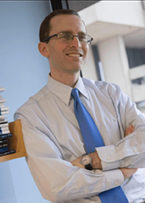
Making multiple perspectives and complexities visible
Benjamin Sommers, Professor of Health Policy and Economics, finishes his Healthcare Safety Net and Vulnerable Populations course with a debate: students are randomly assigned to roles—as senators, witnesses, or experts—and probe aspects of healthcare policy, simulating deliberations that take place on the Senate floor. Somewhat similar to real hearings, each witness makes an opening statement and then takes questions from acting Senators.

